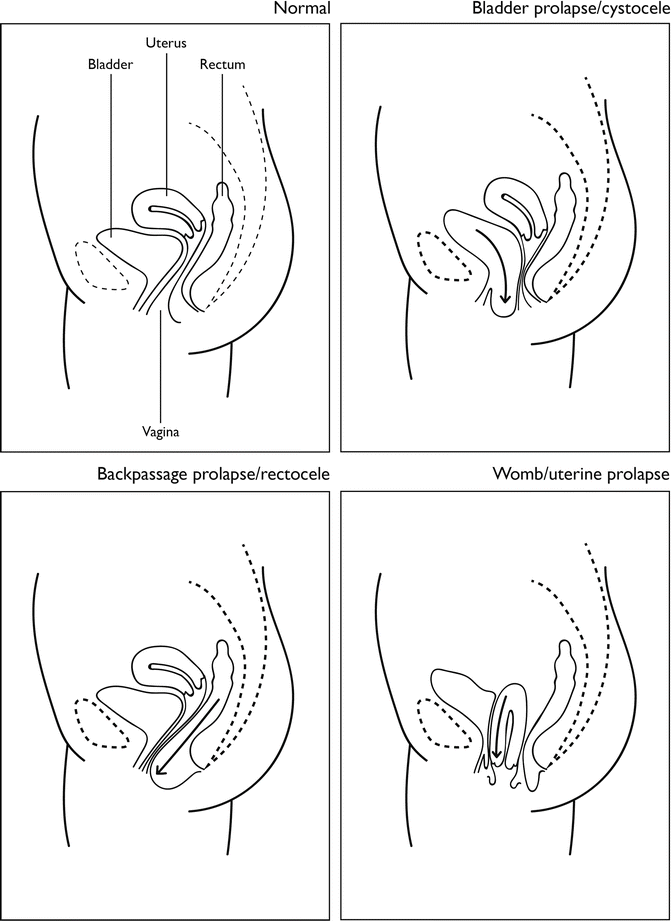and Paula Briggs2
(1)
Department of Obstetrics and Gynaecology, Monash University, Clayton, Victoria, Australia
(2)
Sexual and Reproductive Health, Southport and Ormskirk Hospital, Southport, UK
Definition
Pelvic organ prolapse can be divided into three types (Fig. 9.1):


Fig. 9.1
Types of utero-vaginal prolapse
Anterior prolapse – prolapse of the bladder through the anterior vaginal wall (or less commonly the urethra).
Posterior prolapse – prolapse of the rectum or small bowel (enterocoele) through the posterior vaginal wall.
Vault prolapse – prolapse of the uterine body (or the vaginal vault after hysterectomy).
Incidence
It is estimated that about 50 % of women over 50 experience some degree of prolapse.
Aetilogy and Pathogenesis
The aetiology of POP is multifactorial and only a few items on the aetiological shopping list are relevant:
Congenital – there are genetic factors related to connective tissue quality, which predispose to the development of a POP.
Traumatic – the excessive stretching of the ligaments, fascia and other connective tissue during childbirth results in collagen breakdown, with the new collagen being less resilient. The more deliveries, the bigger the babies, the longer the second stage of labour, the greater the potential damage to the tissues.
Stay updated, free articles. Join our Telegram channel

Full access? Get Clinical Tree


